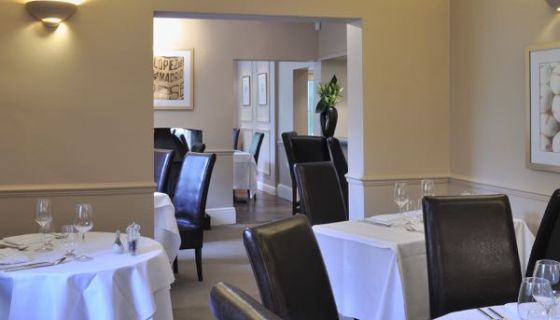It was the presentation as much as the content and flavour of our first course that caught my imagination and made me wonder why and how it had come about.
The menu at our lunch at the long-established Harrow at Little Bedwyn, near Marlborough, Wiltshire, described the dish rather simply as an Arbroath Smokie Milk Shake. It was certainly redolent of this version of smoked haddock from the small town on the Scottish east coast, an ingredient that was a staple of 1970s dinner parties. Here, however, it was served cool, as a drink, in a clear bottle that brandished the restaurant’s name and the Michelin star that the restaurant has proudly held for the past 10 years.
The most obvious reasons for this particular restaurant’s reputation for its food, wine and the warmth of its hospitality are Roger and Sue Jones, the couple who opened here 18 years ago. He provides the culinary and wine expertise while Sue supervises the front of house with considerable ease and charm.
But it was an aside from Sue behind the bar (The Harrow is a former public house) that gave me an insight into how this restaurant has managed to maintain its quality levels for as long as it has done. It made me think about one aspect of the restaurant business that is often overlooked: the amount of washing up every menu generates.
The subject was kitchen staff, an aspect of the business I assumed presented Roger with quite a challenge given his restaurant’s relative isolation (although it is well served by train from London Paddington). ‘We’ve had the same team for the past 17 years’, Sue explained with a smile, ‘since we hired John Brown as our kitchen porter all those years ago. We had a nanny then for our two small children and she and John fell in love, moved with their two daughters into the next village, and John has stayed and cooked as head chef alongside Roger ever since. I think he knows him almost as well as I do by now.’
This symbiosis from the two extremes of the kitchen is obviously invaluable, particularly here as Jones’s dexterity with a menu and the wine list has made his restaurant a venue for many in the wine trade. Our lunch for three wineries from South Africa was an example of Jones’s comprehension of which of his dishes would best match the eight wines from Carsten Migliarina, David Sadie and Newton Johnson. So, for example, he had to end on a savoury note, a Welsh rarebit cigar, a lightly fried tube of melted cheese that in part reflected his strong sporting loyalties (the restaurant’s hallway is hung with framed Welsh rugby shirts and programmes), but also the fact that the final of the eight wines was perhaps the strongest red as none of the wineries had produced anything sweet.
So, while the other customers’ focus was on how the waiting staff would cope with the almost 200 thin Riedel glasses that would be required for this eight-course lunch for 24, I focused on the menu. How would a small kitchen, with obviously limited washing-up facilities – a large part of this restaurant is given over to wine storage – cope with the same number of plates and cutlery?
The answer lay in dispensing with plates until the fourth course, a sashimi of diver-caught scallops and lobster on the top of barely cooked samphire and Perigord truffle from Western Australia, and in dispensing with knives and forks until the fifth course.
We began with the fishy milk shake sipped through black straws. These presumably found their way into the recycling, and the small clear bottles in which they were served into the dishwasher. Next up was a complicated-sounding dish of citrus-cured wild salmon and Torbay crab with peas and cucumber. But this dish was served elegantly, with all the ingredients finely diced, in a small clear glass balanced on a white plate so that it could be eaten, very easily, with just the small fork provided. This was a solution that worked just as easily for the waiting staff as for the customers, as I can only imagine it did for the washers up.
A risotto of Perigord truffle and pistachio with a carrot purée was a very clever combination of flavours, served in a way that ensured that this dish was conveyed as hot as it should be. It was individually portioned into small copper pans with a handle and a teaspoon that could be passed around from trays quickly and efficiently.
Then came our sashimi of lobster dish served with a utensil I have never before used but it proved both supremely efficient and tactile. It was effectively a musical tuning fork, a large two-pronged fork that was extremely adept at maximising every nuance of this complex dish that perhaps could have done with a touch more acidity, but allowed every aspect of it to be picked clean.
It was only with the fifth course, a rather dry pork belly with tempura of fresh shrimps followed by a magnificent fillet of Cornish turbot with Bulgarian ceps, that finally a knife and fork appeared. But by then, half the meal had been served. Very swiftly, very skilfully and very much to the customers’ satisfaction and to those who had to get the washing up done before a busy evening service.
The Harrow at Little Bedwyn Little Bedwyn, Nr Marlborough, Wiltshire. SN8 3JP; tel +44 (0)1672 870871














